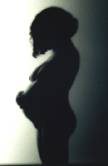
WEDNESDAY, Feb. 2 (HealthDay News) — U.S. teen birth rates showed notable decreases throughout most states and across all racial and ethnic groups from 2007-09, federal researchers reported Wednesday.
Forty-five states reported significant declines in births to teens 18 to 19 years old from 2007 to 2009. Thirty-one states also reported fewer births to 15-to-17-year-olds in that time period, according to preliminary data analyzed by the National Center for Health Statistics, a division of the U.S. Centers for Disease Control and Prevention.
The overall teen birth rate for 2009 — 39.1 births per 1,000 teens ages 15 to 19 — was the lowest since record-keeping began nearly 70 years ago, the CDC first reported in December. The downward trend has remained steady since the early 1990s except for two years, 2006 and 2007.
Northern New England states and the intermountain West reported the steepest declines in birth among teens 18-19 from 2007 to 2009 — 27 percent for New Hampshire and Vermont, while New York, Louisiana, and New Mexico saw smaller, but still significant, dips of 5 percent.
Birth rates for younger teens (15-17) dropped the most in the Southeast and the intermountain West, with rates in Arizona going down by 20 percent.
West Virginia was the only state where teen births in that age group rose significantly — 17 percent — during those years.
But despite recent notable declines, the United States still leads the developed world in numbers of births to teenagers, which concerns public health officials.
Teen childbearing carries significant risks. Babies born to teenage mothers are more likely to be of low birthweight or preterm than infants born to older women, and they have a higher risk of dying during infancy, the report says.
Additionally, it’s estimated that teenage parenting costs the public $9.1 billion a year.
Exactly what accounts for the falloff in births is unclear, although the CDC says some reports suggest that teens engaged in less sexual activity in the 1990s and mid-2000s and also increased contraception use.
Some experts have other thoughts.
“That doesn’t mean decreases in sexual activity, but just alternate intimacies that teenagers are discovering or rediscovering,” said Dr. Lawrence B. Friedman, a professor of pediatrics and director of the division of adolescent medicine at the University of Miami Miller School of Medicine.
“There is also increased use of effective contraception,” he said in December when the CDC announced the record-low teen birth rate.
“Previous studies have suggested that these declines reflected the impact of strong teenage pregnancy prevention messages that accompanied a variety of public and private efforts to focus teenagers’ attention on the importance of avoiding pregnancy,” the report said.
The report authors said additional data expected this year may help pinpoint the specific factors related to the downward trend.
Other highlights of the report:
- Among teens 18-19, birth rates in 2009 for whites (46.1 per 1,000), blacks (97.5 per 1000), and Asian Pacific teens (25.7) were record lows for these groups. While the birth rate for Hispanic teenagers declined more slowly overall from 1991 through 2009, the decline in the rate from 2008 to 2009 (41.0 per 1000) was the largest of all race and ethnicity groups — by 11 percent.
- For younger teens, 15 to 17, the birth rate declined 7 percent in 2009 from 2008, the largest single-year drop since 2000-01. The 6 percent decline reported for older teens, 18 to 19, was the largest single-year decline since 1971-72 and also a historic low for that age group.
- Among the youngest teens, aged 10 to 14, birth rates fell to 0.5 births per 1,000, the lowest ever reported.
More information
The American College of Obstetricians and Gynecologists has more on teenage births.

